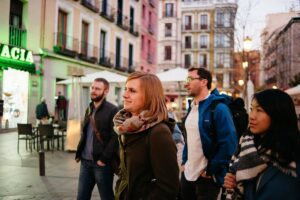Last Updated on August 8, 2018 by Devour Tours | Published: August 8, 2018
Food allergies can be difficult to deal with even at home. Throw in an unfamiliar culture and language, and there’s suddenly so much more to think about. How can you effectively communicate your dietary needs to your server and be sure that you’re not eating anything that can make you ill?
There’s a lot to consider when eating with allergies in Madrid. This guide will walk you through important vocabulary, safe dishes, and foods to avoid.
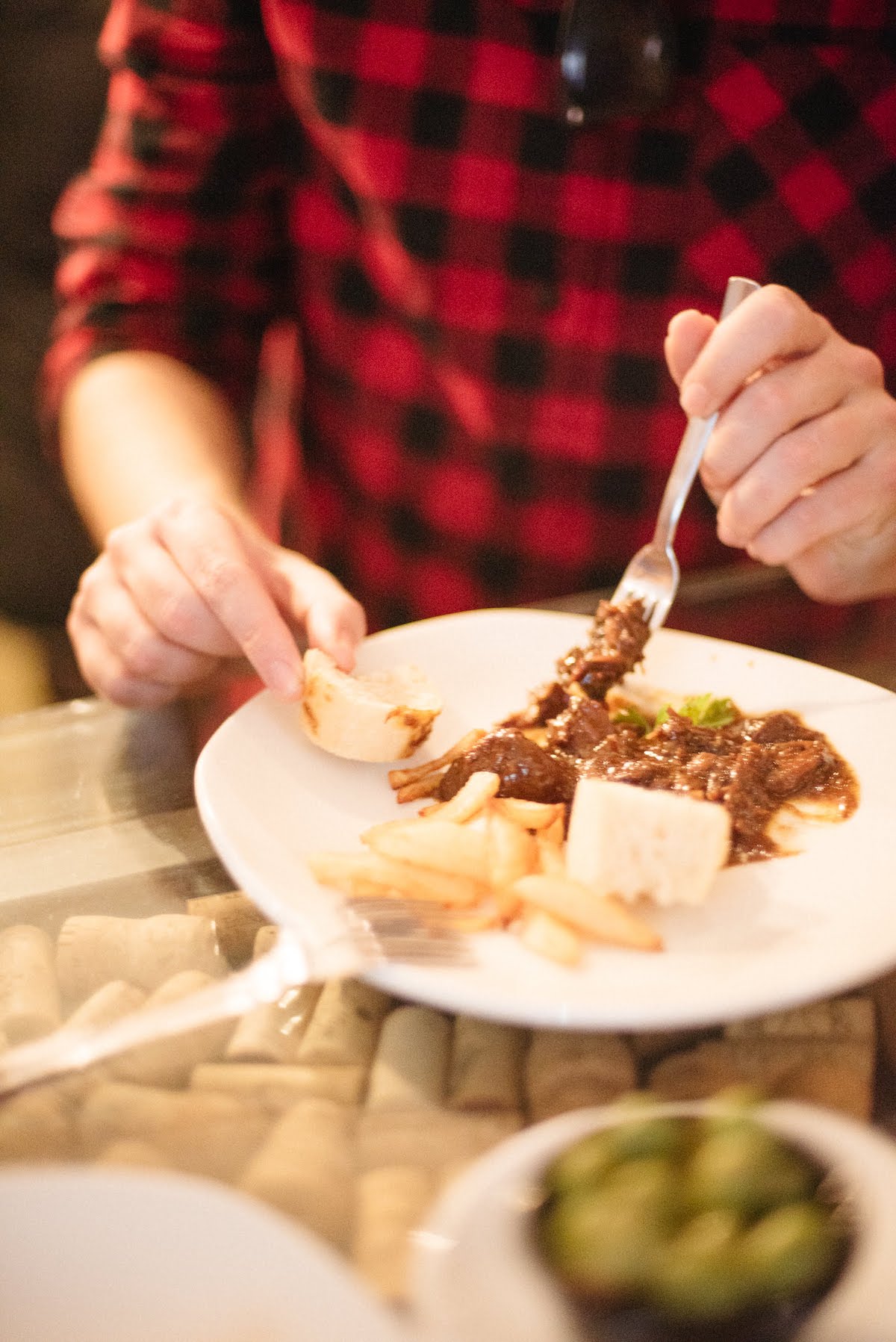
If you’re eating with allergies in Madrid, it’s important to know how to communicate your needs effectively. Plus, you’ll want to know which foods you can’t eat. (You’d probably never guess that a bowl of refreshing ajo blanco soup contains finely ground almond, making it usafe for those with tree nut allergies.)
Here’s everything you need to know so that you can dine safely and still enjoy every bite!
Eating with Peanut & Tree Nut Allergies in Madrid
Nuts can be quite sneaky, as those with nut allergies certainly know. You may be surprised which foods they can end up in. This section of our guide to eating with allergies in Madrid outlines how to avoid nuts safely.
Important note: Peanuts are rarely used in Spanish cuisine. Those with strictly peanut allergies will not have as much to worry about, but may find these tips useful just in case!
Important Spanish Vocabulary for Peanut & Tree Nut Allergies
- Soy alérgico/a a… = I’m allergic to…
- No puedo comer… = I cannot eat…
- ¿Tienes algo que no lleve…? = Do you have anything that does not contain…?
- ¿Esta comida contiene…? = Does this dish contain…?
- frutos secos = tree nuts
- cacahuetes = peanuts
- almendras = almonds
- avellanas = hazelnuts
- anacardos = cashews
- pistachos = pistacios
- castañas = chestnuts
- nueces = walnuts
- piñones = pine nuts
- pipas = sunflower seeds
- ¡Gracias por tu ayuda! = Thank you for your help!
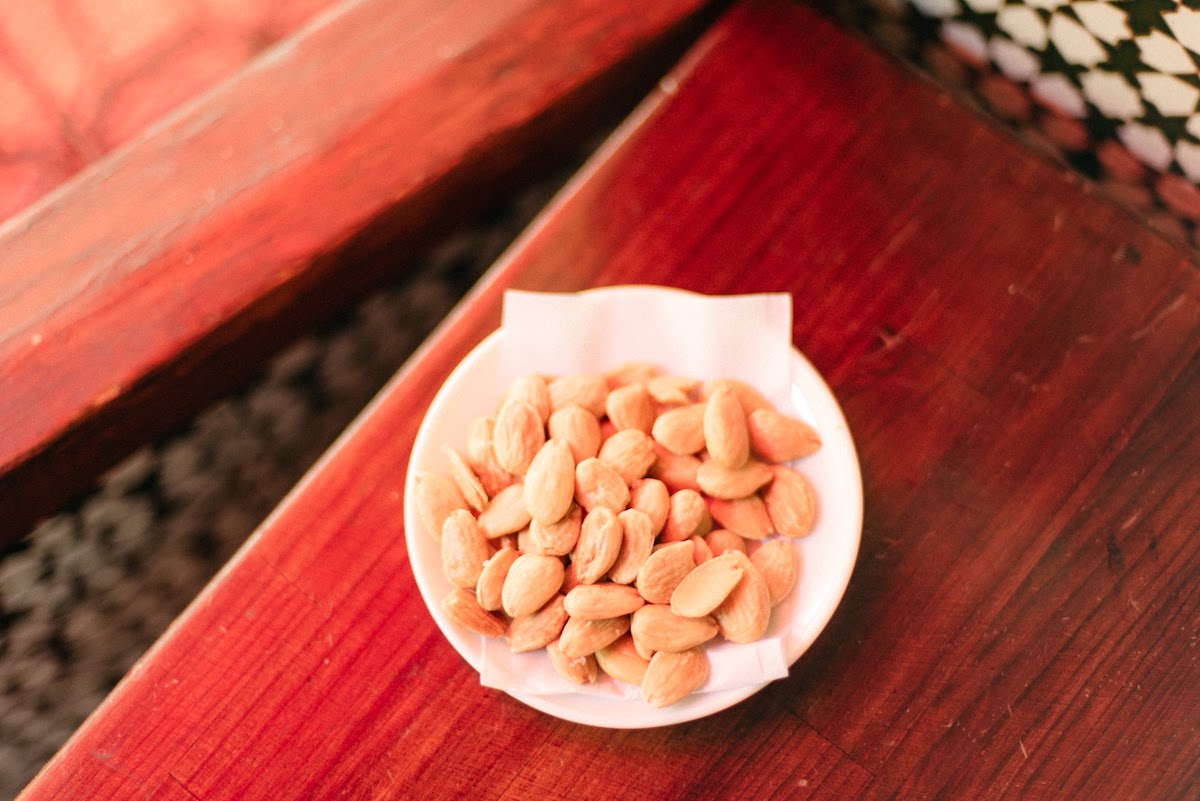
Common Spanish Dishes that Contain Nuts
Some common items you’ll see at tapas bars and restaurants contain nuts, even if you don’t realize it. Occasionally the ingredients are obvious from the name of the dish, but not always.
Here’s what guests with nut allergies should avoid ordering or eating.
- Revuelto de frutos secos: It’s all in the name! This “nut mix” is a common snack that servers at bars will bring with your drink. Ingredients can vary, but common additions include peanuts, hazelnuts and almonds.
- Ajo blanco: This traditional cold soup from Malaga contains almonds.
- Salsa romesco: A staple sauce in dishes from northeastern Spain, those with nut allergies should avoid romesco as it may contain almonds and/or hazelnuts.
- Turrón: A favorite treat at Christmas, this typical dessert is a nougat made with almonds.
- Some salads come with nuts sprinkled on top. Ask your server before ordering.
- Spanish cheese is well worth a try, but many nicer restaurants will garnish cheese boards with nuts. Again, it’s always best to ask to be on the safe side.
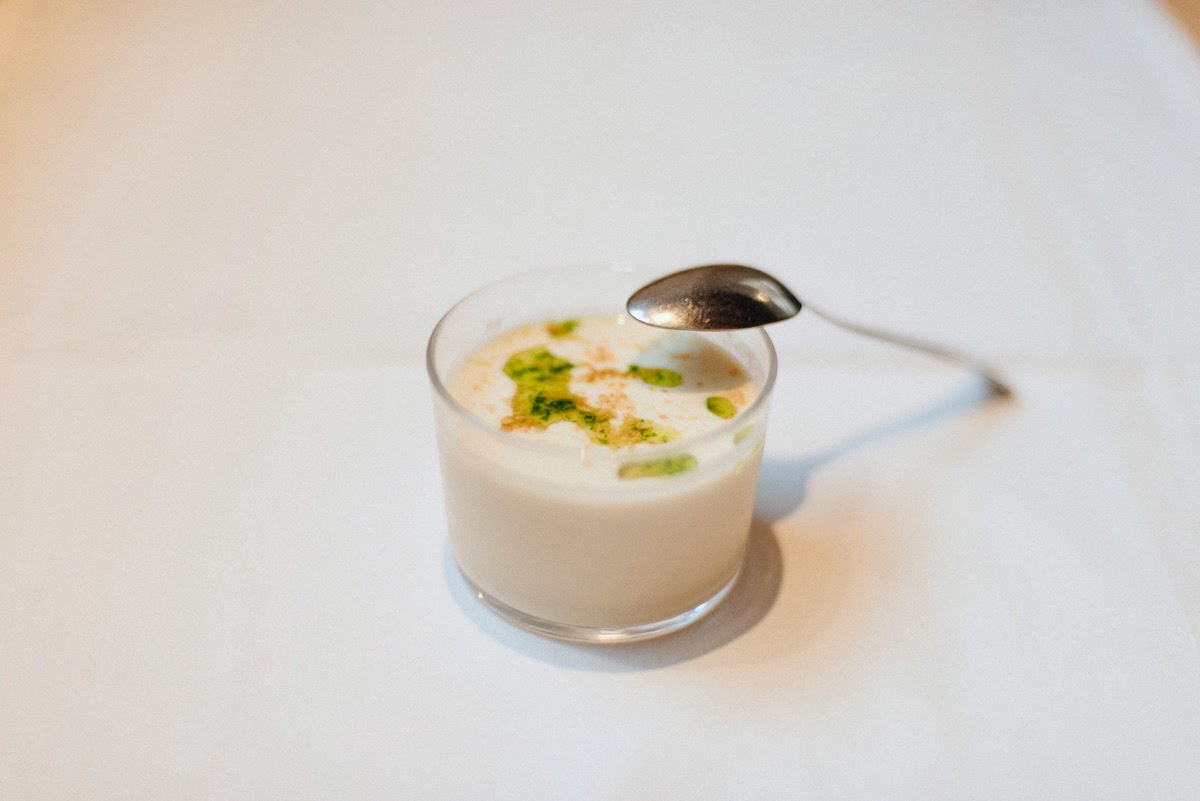
Nut-Free Spanish Foods
Luckily for those with nut allergies, many of Spain’s classic dishes are perfectly safe to eat. Tortilla de patatas (potato omelet) tastes perfect when accompanied by a tapa of gazpacho or its lesser-known cousin, salmorejo. Both cold soups are closely related to ajo blanco, but neither contain nuts (and the tortilla is nothing more than potatoes, eggs and onions!).
Despite its central location, Madrid is home to the freshest seafood in the country. Chow down on a bocadillo de calamares (fried calamari sandwich) at one of the bars off of Plaza Mayor (La Campana is our go-to!) or try gambas al ajillo (garlic shrimp) at a classic tapas joint. So much flavor and no nuts in sight!
Eating with Dairy Allergies in Madrid
Eating with allergies in Madrid can be complicated if you’re lactose intolerant. After all, dairy products aren’t always so obvious, especially when they’re hidden in a sauce or dressing.
Here’s how to navigate Madrid’s food scene safely without coming into contact with dairy.
Important Spanish Vocabulary for Dairy Allergies
- Soy alérgico/a a… = I’m allergic to…
- No puedo comer… = I cannot eat…
- ¿Tienes algo que no lleve…? = Do you have anything that does not contain…?
- ¿Esta comida contiene…? = Does this dish contain…?
- productos lácteos = dairy products
- leche = milk
- yogur = yogurt
- queso = cheese
- mantequilla = butter
- nata = cream
- Sin salsa por favor = No sauce, please!
- ¡Gracias por tu ayuda! = Thank you for your help!
Common Spanish Dishes that Contain Dairy Products
Many times, foods containing dairy products will jump right out at lactose-intolerant diners on the menu. You probably wouldn’t be ordering a cheese plate, for example.
However, sometimes dishes that contain milk products aren’t as obvious. Here are some common dishes that those with dairy allergies should avoid.
- Many sauces are thickened with cream to add texture. Check with your server before you order.
- Some of the most common types of croquetas get their creamy and delicious interior from bechamel sauce, which contains milk and butter.
- Alioli is a common accompaniment to everything from potatoes to seafood. This garlic mayonnaise is traditionally made with raw eggs, but dining establishments use milk instead to comply with food safety laws.
- Arroz con leche is Spain’s answer to rice pudding and made with whole milk. It’s a common fixture on the dessert menu at traditional restaurants.
- Leche frita is a traditional Spanish dessert. Its name translates to “fried milk,” but it’s more of a deep-fried custard concoction. Go with something else for dessert—just not helado (ice cream)!
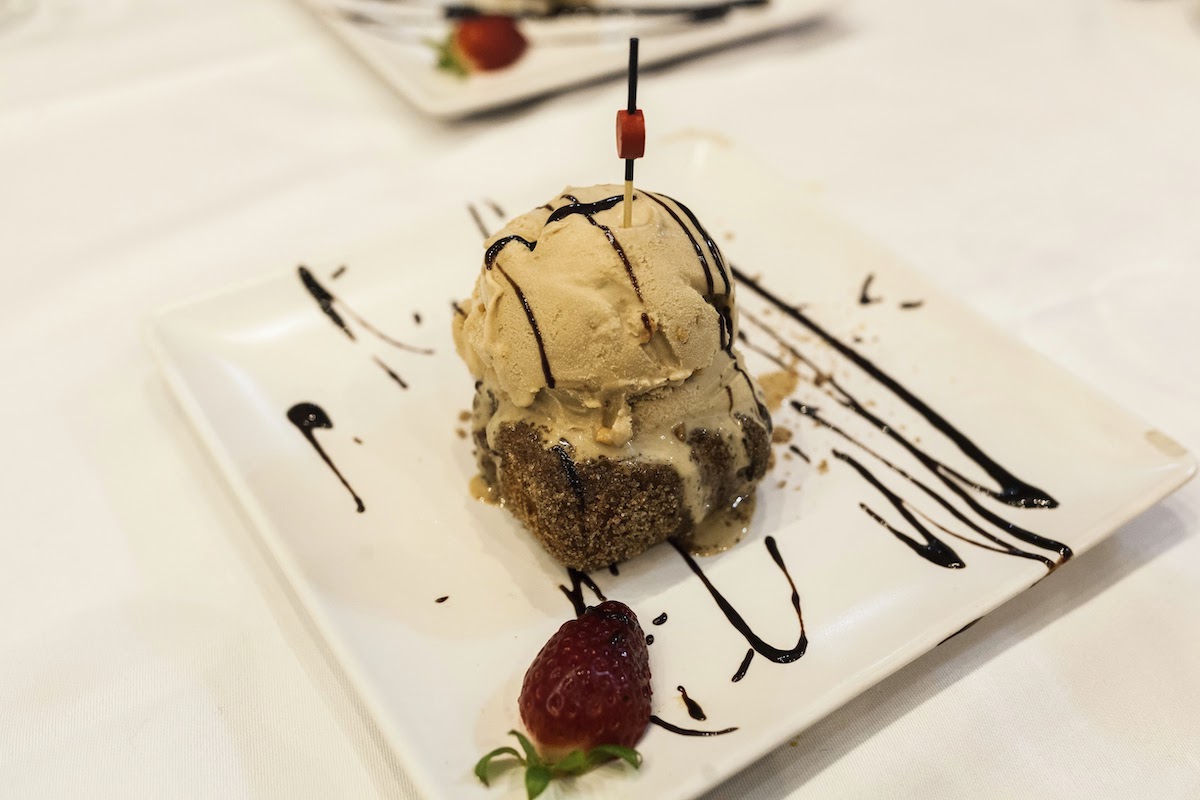
Dairy-Free Spanish Foods
Despite their rich, thick texture, cold soups such as ajo blanco and salmorejo don’t contain a trace of dairy! They’re thickened with bread, making them a great option for those with dairy allergies looking for a filling meal.
Many restaurants in Madrid offer some type of grilled meat. There’s not much to it—the meats are simply seasoned with herbs and grilled to perfection! These would be great heartier options for dairy-free diners as you don’t have to worry about any sauces that might contain milk or cream. Look for carne (meat), pechuga de pollo (chicken breast) or pescado (fish), prepared a la plancha or a la brasa
And due to the recent embrace of veganism, there are plenty of restaurants in Madrid that avoid dairy products altogether. Many vegan and vegetarian restaurants would also be great choices for guests with dairy allergies.

Eating with Gluten Allergies or Intolerance in Madrid
Despite their affinity for bread and beer, Spaniards are becoming increasingly aware of the needs of those who need to avoid gluten.
For an even more complete look at eating with allergies in Madrid if you’re gluten free, check out our gluten free guide to Madrid. The Madrid Association for Celiacs & Gluten-Sensitive People also has some great recommendations (in Spanish) for fully gluten-free eateries in the Spanish capital.
In the meantime, here are some quick pointers on how to eat safely anywhere.
Important Spanish Vocabulary for Gluten Allergies
- Enfermedad celiaca = celiac disease
- Yo soy celiaco/a = I’m celiac.
- No puedo comer productos que tengan como ingrediente: trigo, centeno, cebada o avena = I cannot eat things that contain wheat, rye, barley or oats.
- Libre de gluten OR sin gluten = gluten-free
- Almidón de trigo = wheat starch
- Soy celiaco/a y debo seguir una dieta sin gluten = I’m celiac and must follow a gluten-free diet.
- ¿Esta comida contiene trigo, centeno, cebada o avena? = Does this dish contain wheat, rye, barley, or oats?
- Puedo comer alimentos que contengan arroz, patatas, verduras y frutas, huevos, queso, leche y pescado = I can eat dishes with rice, potatoes, vegetables, fruit, eggs, cheese, milk, and fish.
- Sin salsa por favor = No sauce, please!
- ¡Gracias por tu ayuda! = Thank you for your help!
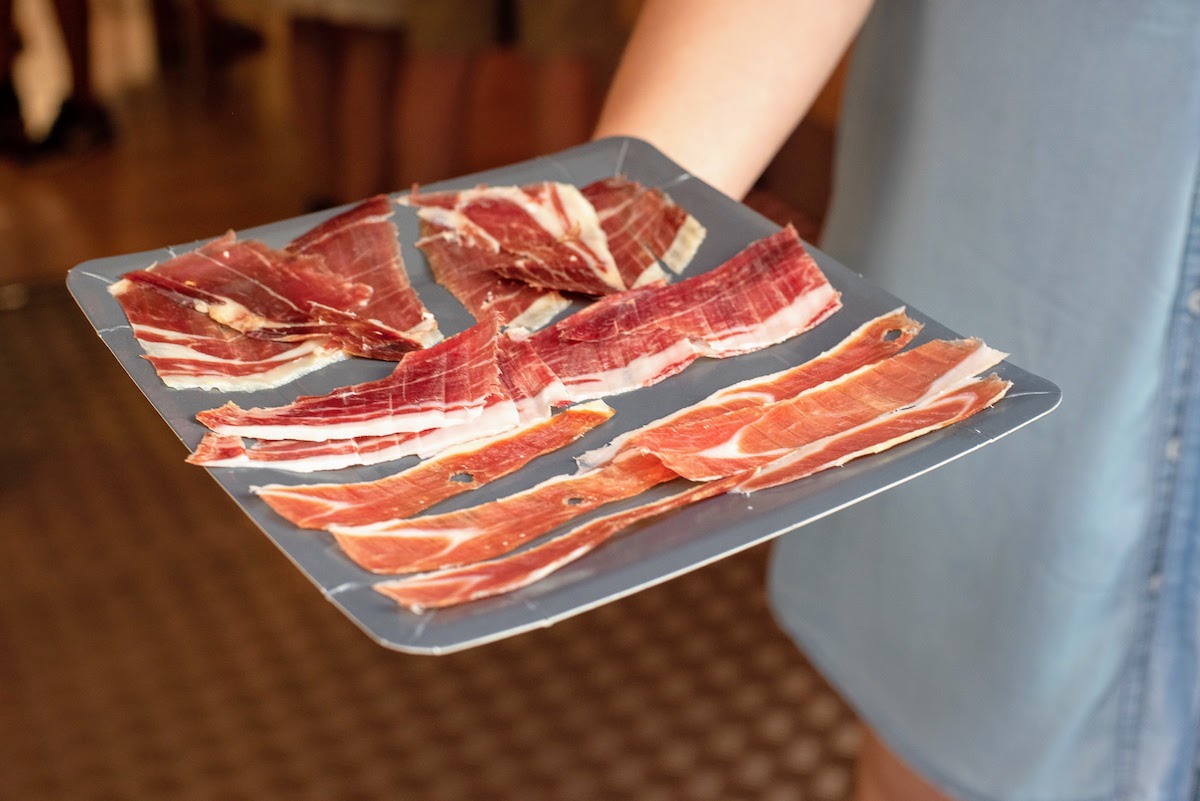
Common Spanish Dishes that Contain Gluten
Many of these dishes can easily be prepared with gluten-free products. However, celiacs should avoid ordering these unless you know for sure that you are at a place that uses gluten-free alternatives.
- Salmorejo, ajo blanco and even some versions of gazpacho get their thick texture from bread or bread crumbs.
- Filete empanado: Similar to a German schnitzel, this lunch menu staple consists of breaded chicken breast or pork fillets.
- Pan con tomate: A popular breakfast option, this simple yet delicious dish is essentially toasted bread topped with fresh tomato.
- Croquetas, or croquettes, are coated in bread crumbs before being fried.
- Albóndigas: Spanish meatballs are a popular option at many restaurants, but often contain bread crumbs.

Gluten-Free Spanish Foods
Luckily for celiacs, many of Spain’s most delicious foods don’t contain gluten! Jamón is safe to eat, as are patatas bravas (just check to make sure no flour was used in the frying process—it usually isn’t). Tortilla de patatas and Spain’s excellent rice dishes also make our safe list.
Eating with Allergies in Madrid FAQs
The most commonly used phrase for “gluten free” in Spain is sin gluten.
Lactose intolerant in Spanish is translated as intolerante a la lactosa. To describe your own needs, use it with the verb soy (I am) at the beginning of the sentence: Soy intolerante a la lactosa.
Trigo means wheat, so it’s a good word to look out for if you’re gluten free.
If you identify as male, say alérgico. If you identify as female, it would be alérgica.
Most, if not all, restaurants in Spain will go out of their way to ensure your food doesn’t contain any risky allergens, as long as you tell them so.
Update Notice: This post was originally published on August 8, 2018 and was updated with new text and photos on May 31, 2021.
